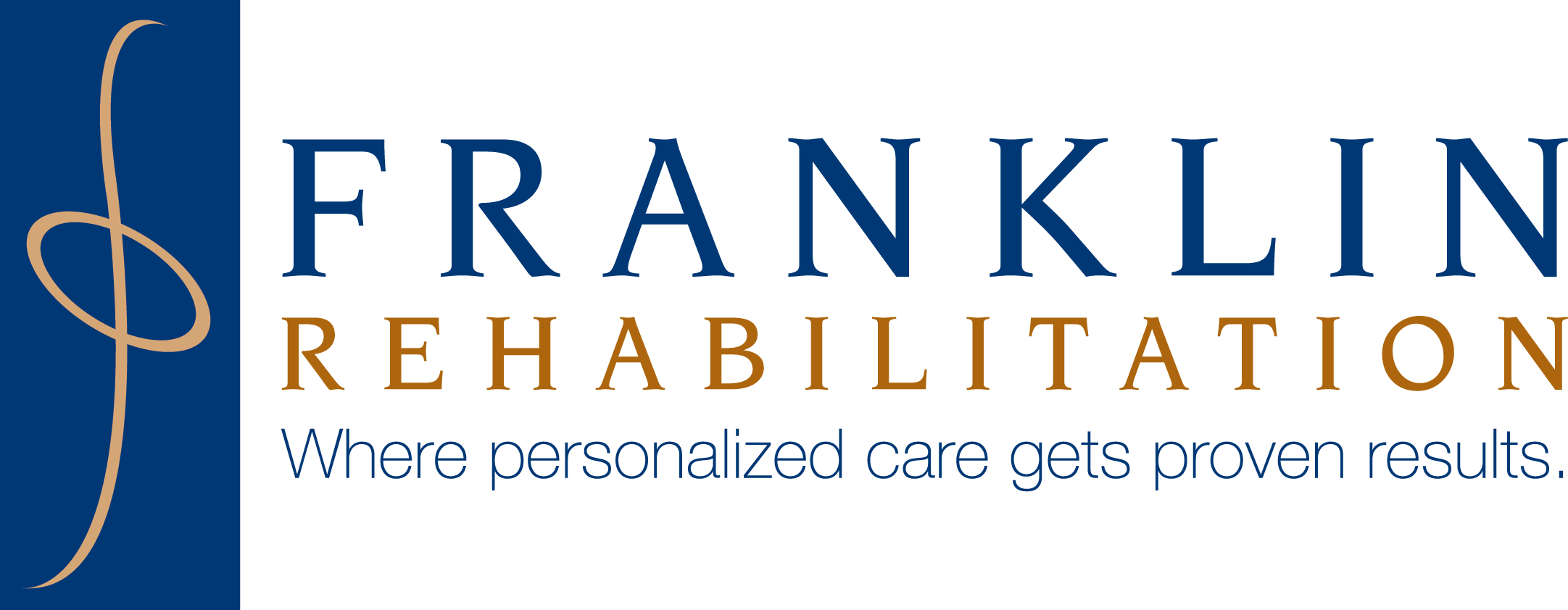A beginner’s guide: The Graston Technique®

If you’ve been injured or are experiencing pain in your soft tissue, you will likely be looking for a treatment that can help relieve your pain and promote healing. You may find yourself looking at physical therapy as a treatment option and may be overwhelmed by the names of all the available treatment approaches. Your physical therapist may use the Graston Technique® to help you in your treatment.
What is the Graston Technique?
The Graston Technique was created out of necessity. It was developed in the 1990s by David Graston, an amateur athlete and chiropractor who had a debilitating knee injury from a waterskiing accident. During his recovery from surgery, he was frustrated that he wasn’t seeing the progress he hoped for. He decided to take things into his own hands and created instruments he hoped would help his soft tissue injury.
The success he had in his recovery, thanks to the specially designed stainless steel instruments, led to medical trials with Ball Memorial Hospital and Ball State University in Indiana. During these trials, the Graston Technique was created. This evidence-based therapy technique uses these specially designed tools to locate trigger points in the soft tissue. Trigger points are knots in the tissue that can be caused by muscle tension or scar tissue. Once the trigger points are found, your physical therapist will use the stainless steel tools to help break up and release these knots. This can help reduce the pain you’re experiencing and can help improve your functioning and range of motion in the affected area. It may also help boost your recovery time.
How does the Graston Technique work?
You can think of your muscles and connective tissue as a highway system for your body’s movement. When an injury, overuse or certain conditions create roadblocks in this system, you may experience pain and stiffness. These roadblocks can be caused by:
- Scar tissue — This is tough, fibrous tissue that forms during the healing process. While scar tissue is essential for healing, it can sometimes become excessive or disorganized. When this happens, it can restrict movement and cause pain.
- Trigger points — These are hypersensitive spots in muscles that can cause pain and tightness in other areas of the body. When the pain happens away from the trigger points, it’s called referred pain.
- Adhesions — These are sticky areas where tissue becomes stuck together and limits mobility.
The Graston Technique can help break up these roadblocks by using six different tools. Your physical therapist will use these tools to apply pressure and friction to specific areas to help:
- Increase blood flow to the affected area to help promote healing.
- Break down scar tissue and adhesions.
- Stimulate the nervous system to help reduce pain and promote the body’s natural healing response.
- Improve the function and ability of your muscles and joints.
The stainless steel instruments used in the Graston Technique have a unique design and purpose. Standard instrument shapes include:
- Straightedges — These are used for broad strokes across larger muscle areas.
- Spoons — These are designed to help target deeper tissue and break up adhesions.
- Veins — These can be ideal for following along the contours of muscles and tendons.
- Hooks — These can be effective for reaching into specific areas and applying focused pressure.
Your physical therapist will use the appropriate instruments based on your specific condition and the areas being treated. The Graston Technique can also be used in combination with other physical therapy modalities.
Is the Graston Technique dangerous? Is there evidence it works?
While the stainless steel instruments can look intimidating, the Graston Technique is considered a safe and effective treatment when performed by a trained professional. As with any treatment, there can be a chance of minor discomfort, inflammation or bruising. This can be due to the pressure being applied by the instruments during the treatment session.
Studies show that the Graston Technique can be a beneficial treatment for conditions like carpal tunnel syndrome and plantar fasciitis. It is not an appropriate treatment for all conditions or injuries that can bring you in for physical therapy treatment. Your physical therapist will determine if it’s an appropriate technique to add to your personalized treatment plan.
Who can do the Graston Technique?
Only certified practitioners who have completed specialized training in the Graston Technique should use it. Practitioners go through a series of training sessions to become certified. Training begins with the basics like learning the instruments and how to apply the techniques. As they progress through the training, they learn how to incorporate this treatment with other therapeutic modalities. Once they have their certification, continuing education is encouraged to help build on the knowledge gained during their initial training.
The Graston Technique is used in a variety of disciplines and can be performed by certified:
- Physical therapists or physical therapist assistants.
- Athletic trainers.
- Chiropractors.
- Occupational therapists and occupational therapist assistants.
What conditions can be treated with the Graston Technique?
The Graston Technique can help treat soft tissue conditions or issues including, but not limited to:
- Achilles tendinitis.
- Back pain.
- Carpal tunnel syndrome.
- Fibromyalgia.
- Golfer’s elbow.
- Hamstring injuries.
- IT band issues.
- Jumper’s knee or patellar tendinitis.
- Muscle strains and tears.
- Neck pain.
- Plantar fasciitis.
- Post-surgical scar tissue (once healed).
- Rotator cuff tendinitis.
- Tennis elbow.
- Trigger finger.
- Women’s health issues like C-section scarring or post-mastectomy.
What are the benefits the Graston Technique can provide?
The Graston Technique is an evidence-based manual therapy approach. When used by a certified practitioner, patients can see up to 90% improvement. Benefits of the Graston Technique include:
- Quicker recovery time — By increasing the blood flow and bringing oxygen and nutrient-rich blood to the affected area and breaking down scar tissue, the Graston Technique can help accelerate the healing process for a variety of soft tissue injuries.
- Reduced pain and inflammation — The technique can help to decrease pain signals and reduce inflammation, leading to improved comfort and function of the affected area.
- Improved range of motion and flexibility — By addressing scar tissue and adhesions, the Graston Technique can help improve your range of motion and flexibility in the affected area.
- Improved function and performance in daily activities — Improved mobility and reduced pain can allow you to return to your daily activities and hobbies with more ease.
- A drug-free approach — The Graston Technique is a noninvasive treatment approach that doesn’t require medication. This can be appealing for those who prefer to avoid medication or lessen the need for pain or anti-inflammatory medications.
- Shorter treatment time — Going hand in hand with a faster recovery time comes a shorter time needed for treatment.
- Improved chronic conditions — Conditions previously thought to be chronic can be helped or resolved with the Graston Technique added to a patient’s treatment plan.
- Activated nerves — Pressure from the instruments can help activate certain nerves in the affected area. These nerves can help your body strengthen and repair muscles.
What can I expect during a Graston Technique session?
Your first session with your physical therapist will involve a consultation and thorough evaluation. They will ask about your medical history, symptoms and goals for your treatment. The evaluation will involve assessing the affected area and determining if the Graston Technique will be an appropriate addition to your treatment plan. Your physical therapist will explain the process and answer any questions you may have. Your entire session will depend on the severity of your condition and treatment plan and may involve:
- Undressing to expose the treatment area or wearing loose-fitting clothing to easily access the area.
- Applying lotion or gel to the skin for better instrument glide.
- Using the instruments to apply pressure and friction to the specific area.
- Incorporating stretching or strengthening exercises to help improve mobility and function.
The number of treatment sessions you’ll need will depend on your individual condition and its severity. Your sessions will be spaced as recommended by your physical therapist. It’s important to be open and honest with your physical therapist about your progress and any concerns you may have.
Franklin Rehabilitation can help you find relief with the Graston Technique
Here at Franklin Rehabilitation, we have certified Graston Technique practitioners. Our licensed physical therapists understand the importance of a holistic approach to healing, and we’ll work with you to integrate the Graston Technique with other modalities to help you see optimal results. We will create a personalized treatment plan tailored to your specific needs to help you improve mobility, manage your pain and reach your therapeutic goals so you can get back to living your best life.
Call us or request an appointment today for your physical therapy needs, including the Graston Technique.
